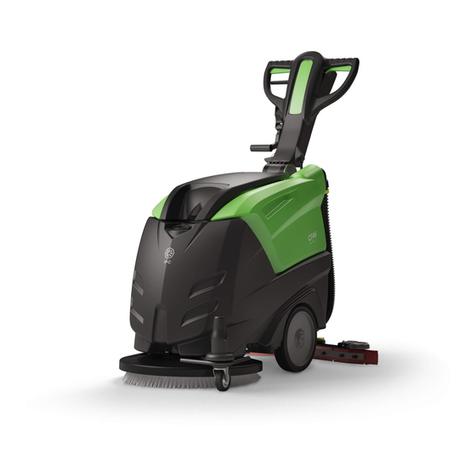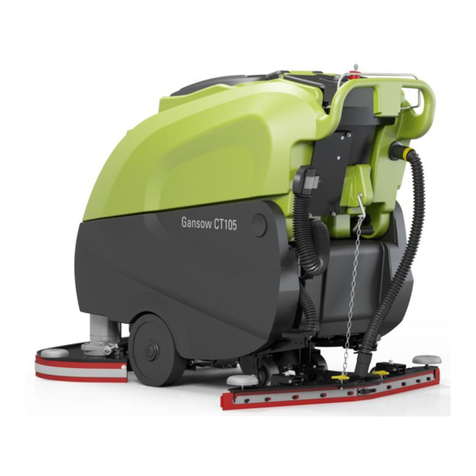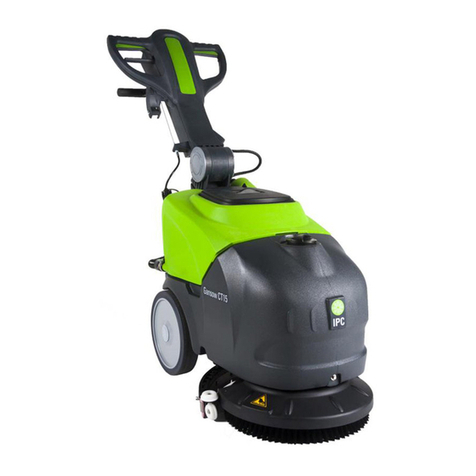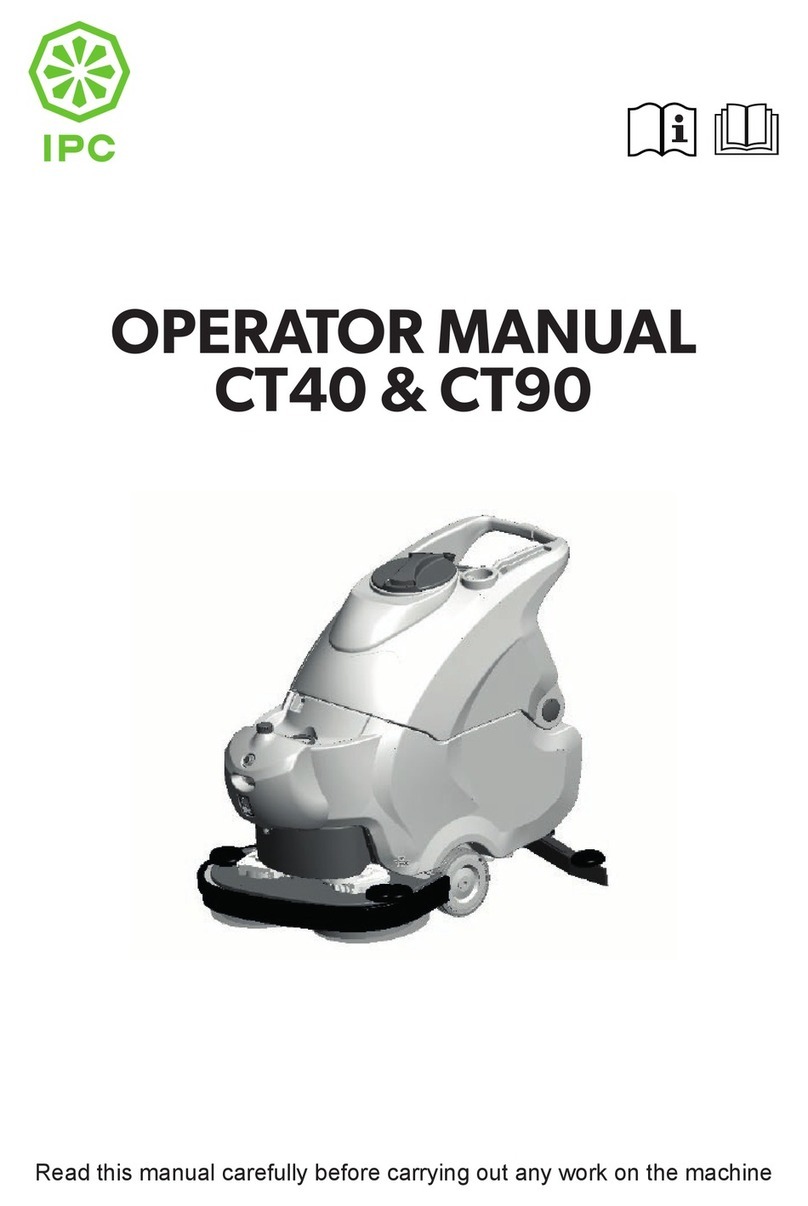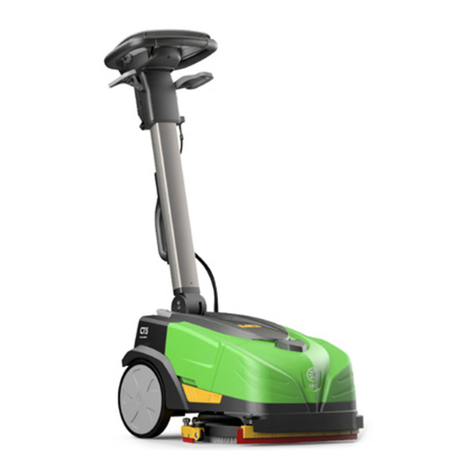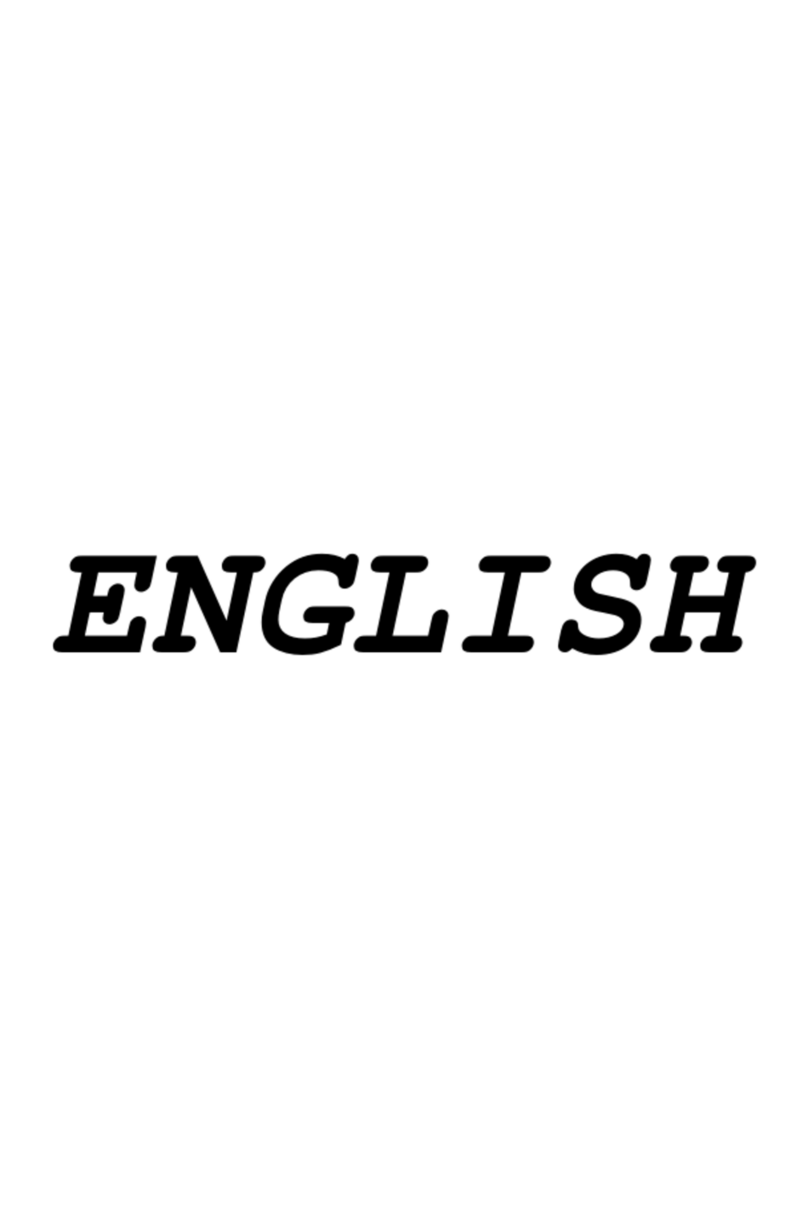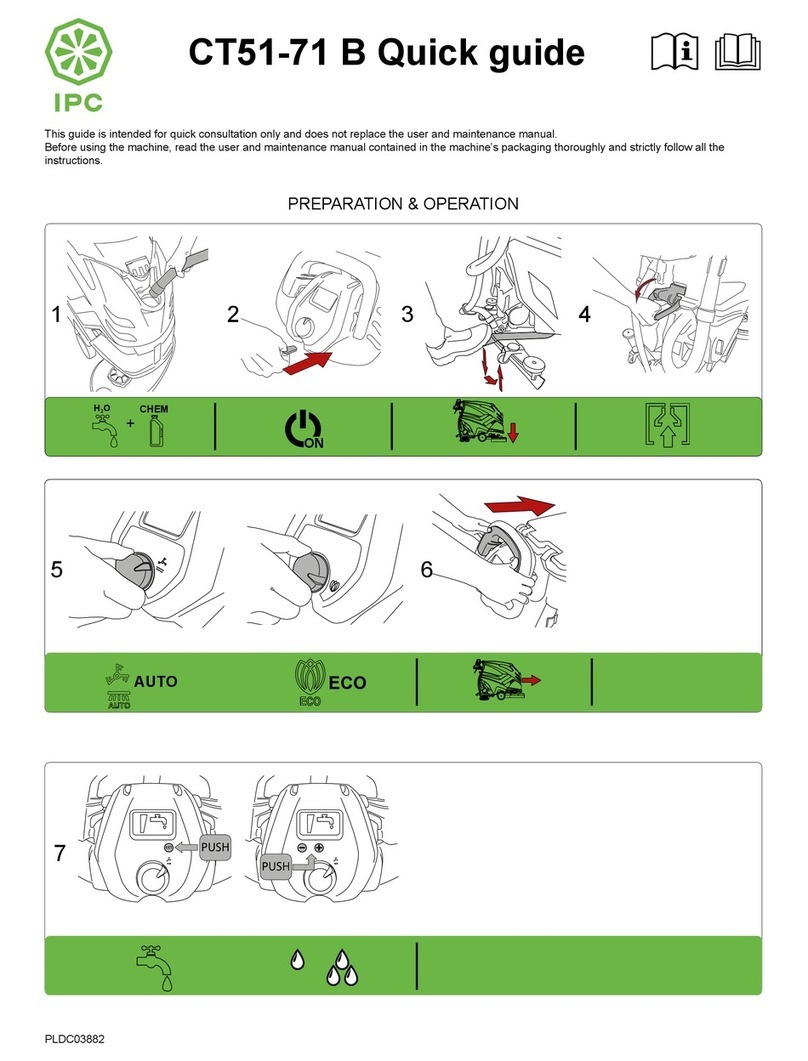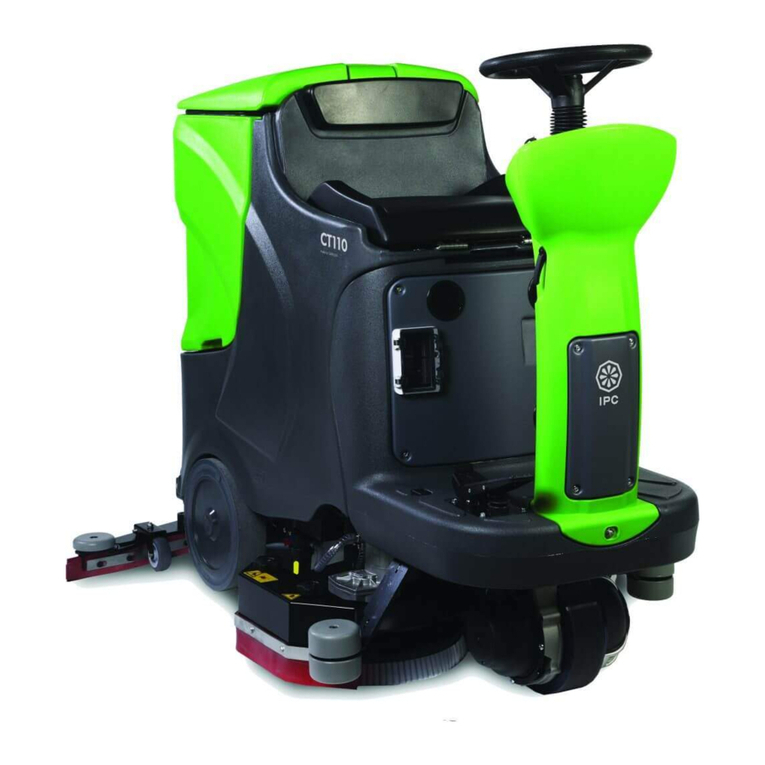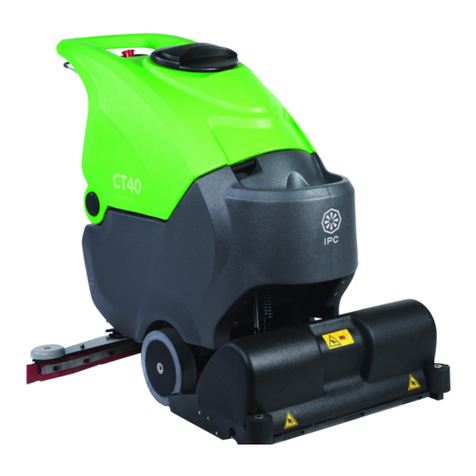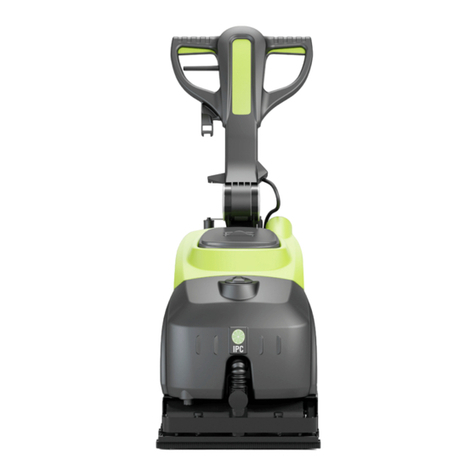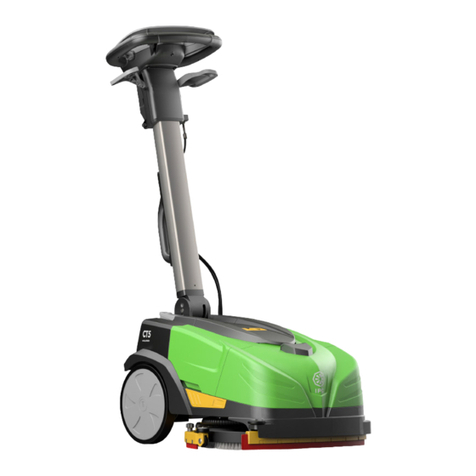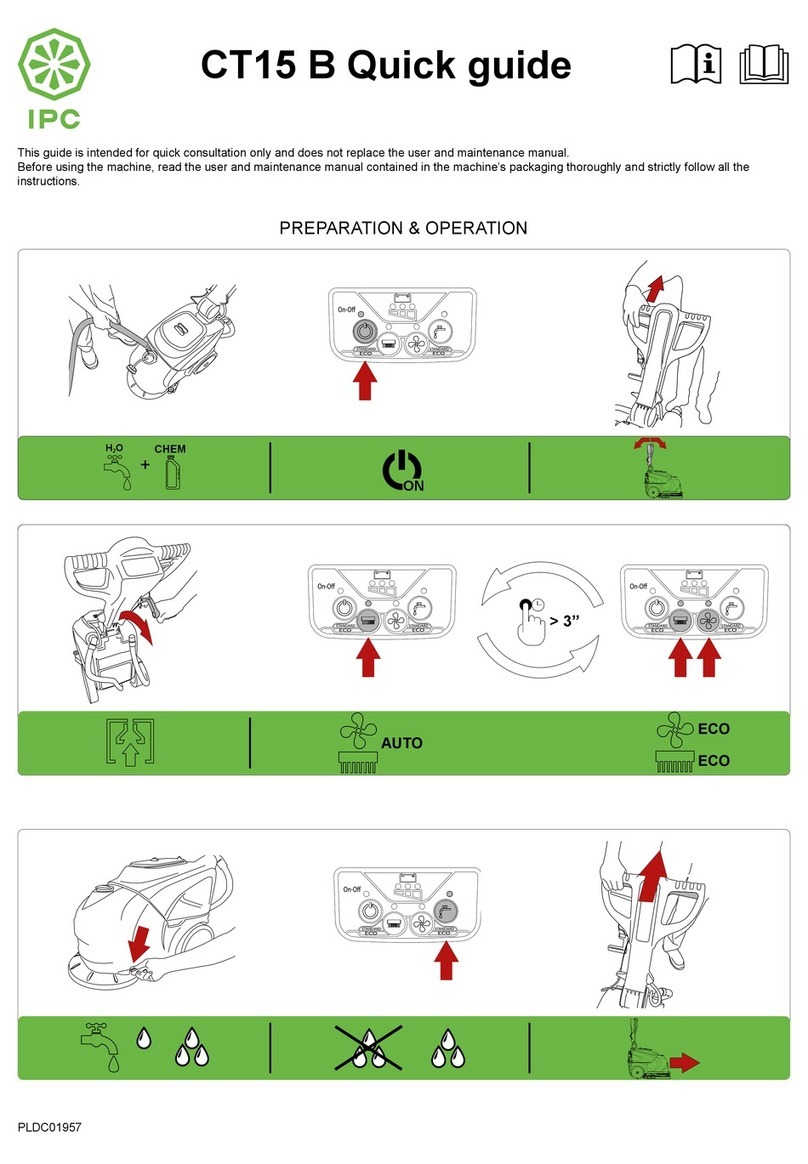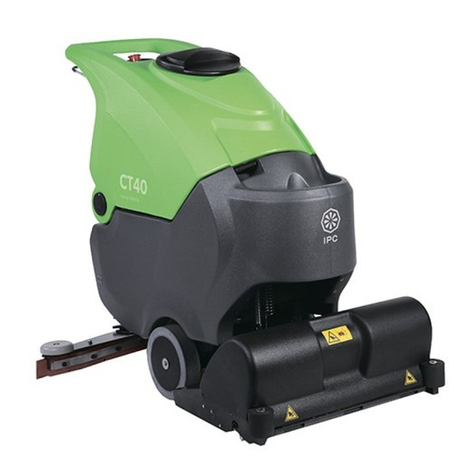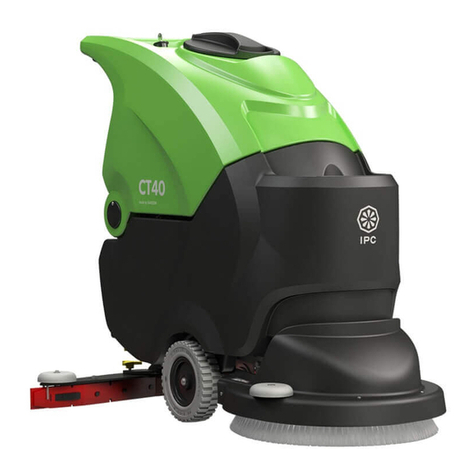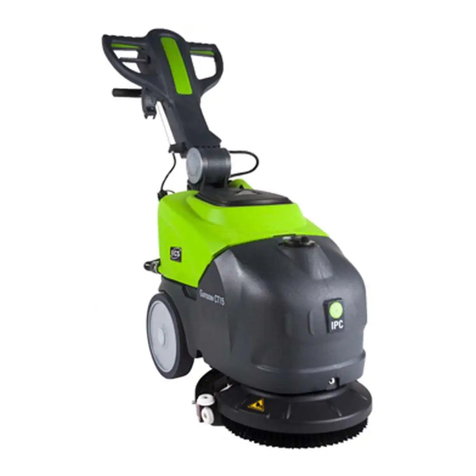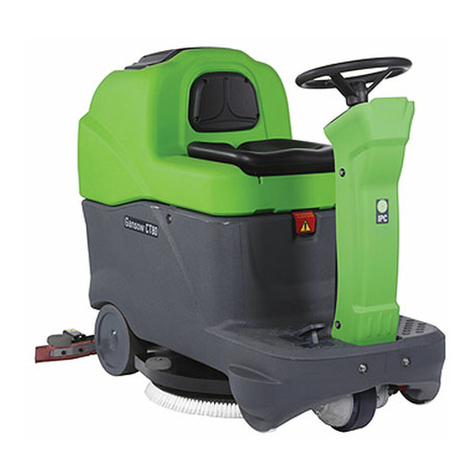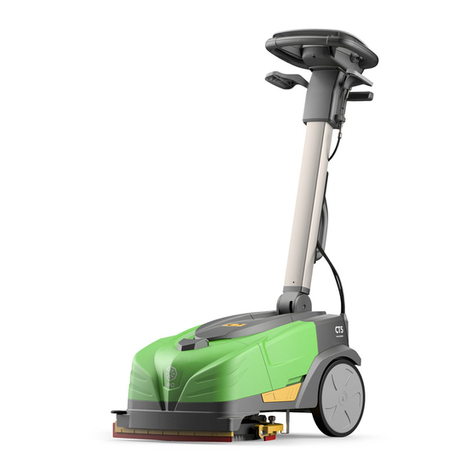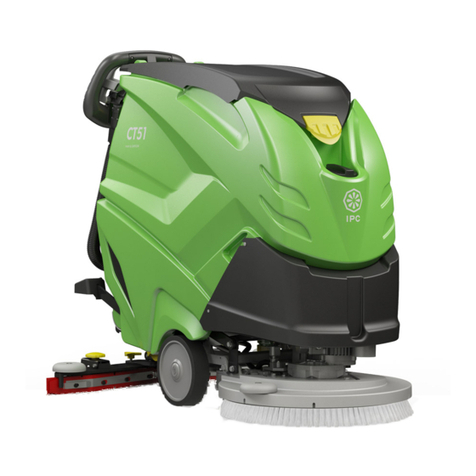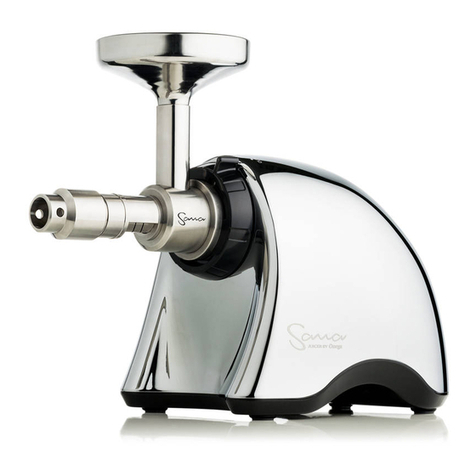
Page 7
Never use detergents other than those specifi ed.
Follow the instructions on the relative safety sheet.
We recommend keeping detergents out of reach of
children. In the event of contact with the eyes, wash
immediately with abundant water. If ingested, consult
a doctor immediately.
Numerous unpleasant experiences have shown that
a wide range of personal objects may cause serious
accidents. Before beginning work, remove jewellery,
watches, ties, etc.
The operator must always use personal protection
devices: protective apron or overalls, non-slip
waterproof shoes, rubber gloves, protective goggles
and ear protectors and mask to protect the respiratory
tract.
Do not pick up burning or smoking material like
cigarettes, matches or hot ashes.
Never operate the machine on slopes or ramps
of more than 2%. Never drive across even gentle
slopes. Always manoeuvre with care and avoid
reversing.
If you need to transport the machine over ramps or
steep slopes, to prevent it tipping over or running out
of control, completely empty the detergent and dirty
water tanks and remove the batteries.
Never park the machine on a slope.
Never leave the machine unattended while switched
on. Before leaving it, disconnect the machine from
the mains power supply and make sure it cannot
move accidentally.
Never use the machine to transport people or goods
or to tow things. Do not tow the machine.
Never rest objects of any weight on the machine for
any reason.
Do not remove, modify or bypass safety devices
(brush guards, battery covers, fuses, electric system
covers, etc.).
Always check the condition of the brush guard before
operating the machine. If any damage is found,
do not operate the machine but have the guard
replaced by personnel trained and authorised by the
manufacturer.
Never touch the brush unless the machine is
disconnected from the power supply.
The fl uids collected during work contain detergent,
disinfectant, water and organic and inorganic
material.
They must be disposed off in accordance
They must be disposed off in accordance
with current legislation.
with current legislation.
Never wash the machine with water jets.
Make sure the electrical
characteristics of the
machine (voltage, frequency, power) given on
machine (voltage, frequency, power) given on
the nameplate correspond to those of the mains
the nameplate correspond to those of the mains
electricity supply.
Make sure the power sockets used for mains
powered models and battery chargers are properly
earthed and protected by a 2-pole thermal magnetic
switch with diff erential circuit-breaker:
► rated current 15-16A
► IΔn diff erential current: 0.03A
► Icn breaking capacity: 6000 A
► AC diff erential breaker intervention
This equipment must be earthed. In the event of a
This equipment must be earthed. In the event of a
malfunction or failure, the earth connection provides
malfunction or failure, the earth connection provides
the path of least resistance for electrical current,
the path of least resistance for electrical current,
minimising the risk of of an electric shock.
minimising the risk of of an electric shock.
Mains powered versions come with a three-wire cable
Mains powered versions come with a three-wire cable
and a three-pin earthed plug for use in a suitable
and a three-pin earthed plug for use in a suitable
earthed socket. The earth wire is yellow and green.
earthed socket. The earth wire is yellow and green.
Never connect this wire to anything other than the
Never connect this wire to anything other than the
earth terminal of the socket.
earth terminal of the socket.
The plug must be plugged into a suitable socket,
The plug must be plugged into a suitable socket,
correctly installed and wired according to local
correctly installed and wired according to local
standards.
Incorrect wiring or failure to connect the machine’s
Incorrect wiring or failure to connect the machine’s
earth wire may lead to a risk of of an electric shock.
earth wire may lead to a risk of of an electric shock.
If you are in doubt about the proper earthing of
If you are in doubt about the proper earthing of
the power socket, have it checked by a qualifi ed
the power socket, have it checked by a qualifi ed
electrician.
Do not tamper with the plug supplied with the
Do not tamper with the plug supplied with the
machine. Only use sockets that are suitable for
machine. Only use sockets that are suitable for
the machine’s mains plug. If the plug needs to be
the machine’s mains plug. If the plug needs to be
replaced, have the job done by a
replaced, have the job done by a
qualifi ed electrician
.
Use of adapters with the machine’s mains power plug
Use of adapters with the machine’s mains power plug
is strictly forbidden.






